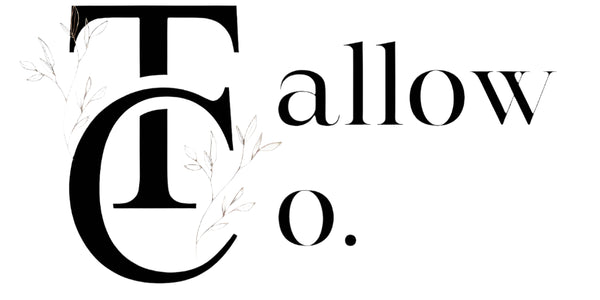
The High-Fat, Low-Carb Diet: A Deep Dive into Ketosis and Beyond
Share
The high-fat, low-carb (HFLC) diet has surged in popularity over the last decade, captivating fitness enthusiasts, health seekers, and even skeptics with its bold promise: eat fat to burn fat. Often associated with the ketogenic diet (or “keto” for short), this eating approach flips conventional dietary wisdom on its head. Instead of carbs being the cornerstone of your plate, fats take center stage, while carbohydrates are relegated to a supporting role. But what’s the science behind it? How does it work in practice? And is it worth the hype? Let’s break it down.
What Is a High-Fat, Low-Carb Diet?
At its core, an HFLC diet drastically reduces carbohydrate intake—typically to less than 50 grams per day, sometimes as low as 20 grams—while prioritizing fats as the primary energy source. Protein sits in a moderate middle ground, enough to maintain muscle mass but not so much that it interferes with the diet’s metabolic magic. A typical macro breakdown might look like this:
• Fats: 70-80% of daily calories
• Protein: 15-20%
• Carbs: 5-10%
Think avocados, butter, olive oil, nuts, and fatty cuts of meat, with a sprinkle of leafy greens and a hard pass on bread, pasta, and sugar. The goal? To shift your body from burning glucose (derived from carbs) to burning fat, a state known as ketosis.
The Science: How It Works
When you eat carbs, your body breaks them down into glucose, which fuels your cells and gets stored as glycogen in your liver and muscles. Excess glucose? That’s turned into fat. But when carbs are scarce, glycogen stores deplete, and your liver starts producing ketones—molecules made from fat breakdown—that serve as an alternative fuel source, especially for your brain.
This metabolic switch is the heart of the HFLC diet. By keeping carbs low, insulin levels drop, signaling your body to tap into fat reserves for energy. Over time, proponents say, you become “fat-adapted,” meaning your body gets better at burning fat, whether from your plate or your love handles.
Potential Benefits
The HFLC diet isn’t just a fad—it’s backed by some compelling research and real-world results. Here’s what it might offer:
1. Weight Loss: By stabilizing blood sugar and reducing hunger hormones like ghrelin, many find it easier to eat less without feeling deprived. Studies show keto can outperform low-fat diets for short-term fat loss, especially in the first 6-12 months.
2. Mental Clarity: Fans rave about the “brain fog” lifting once they’re in ketosis. Ketones provide a steady energy supply to the brain, potentially sharpening focus and mood.
3. Blood Sugar Control: With minimal carbs, blood sugar spikes are rare. This makes HFLC a go-to for managing type 2 diabetes or insulin resistance, often reducing the need for medication (under medical supervision, of course).
4. Energy Stability: Say goodbye to the 3 p.m. carb crash. Fat burns slower and steadier than glucose, offering sustained energy without the rollercoaster.
5. Therapeutic Uses: Originally developed in the 1920s to treat epilepsy, keto’s still used today for drug-resistant cases. Emerging research hints at benefits for neurodegenerative diseases like Alzheimer’s, though it’s early days.
The Practical Side: What to Eat
So, what does a day on HFLC look like? Picture this:
• Breakfast: Eggs fried in butter with bacon and a side of spinach.
• Lunch: A Cobb salad with grilled chicken, avocado, cheese, and olive oil dressing.
• Dinner: Salmon cooked in coconut oil, paired with roasted Brussels sprouts.
• Snacks: Macadamia nuts, pork rinds, or a square of 85% dark chocolate.
Carb-heavy staples like rice, potatoes, and fruit (except berries in moderation) are off the table. Sugar’s a no-go, but sweeteners like stevia or erythritol can step in. Hydration’s key—ketosis can dehydrate you—so water, broth, and electrolytes are your friends.
Challenges and Downsides
It’s not all bacon and roses. The HFLC diet has its hurdles:
• Keto Flu: As your body adjusts (usually 3-14 days), you might feel tired, irritable, or foggy. Upping salt and water helps.
• Social Friction: Dining out or family meals can get tricky when bread baskets and pasta are everywhere.
• Nutrient Gaps: Cutting carbs can mean less fiber and micronutrients if you’re not strategic with veggies and supplements.
• Long-Term Questions: While short-term benefits are solid, data on decades-long HFLC eating is sparse. Some worry about heart health from saturated fats, though recent studies challenge the fat-cholesterol dogma.
Is It Right for You?
The HFLC diet isn’t one-size-fits-all. It shines for those with specific goals—weight loss, metabolic health, or even athletic endurance (once adapted). But if you’re a carb-lover or thrive on high-intensity workouts fueled by glycogen, it might feel restrictive. Lifestyle matters too: can you commit to cooking most meals and dodging hidden carbs?
Before diving in, chat with a doctor, especially if you’ve got health conditions or take meds. Done right, HFLC can be a powerful tool; done carelessly, it’s a recipe for frustration.
Final Thoughts
The high-fat, low-carb diet is more than a trend—it’s a paradigm shift that challenges what we’ve been taught about food. Whether you’re drawn to its fat-burning potential, mental boost, or rebel allure, it’s a journey worth exploring with an open mind and a well-stocked fridge. Will it stick around as a lifestyle or fade like low-fat yogurt? Only time—and more research—will tell. For now, pass the ghee, and see where the ketosis road takes you.
